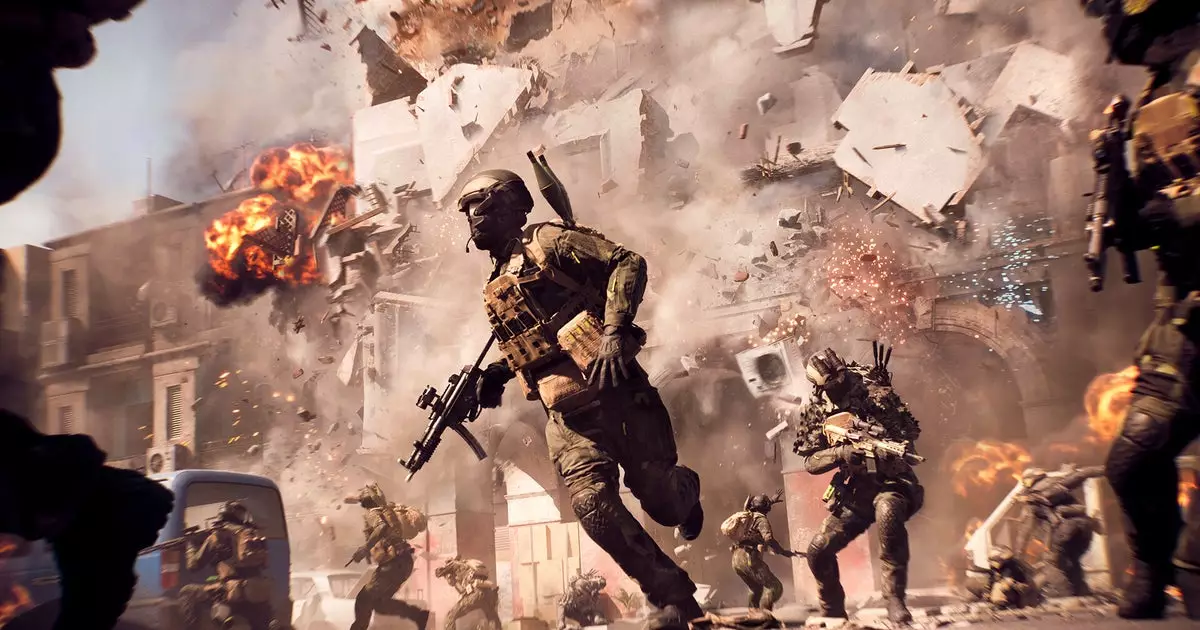When examining the upcoming release of Battlefield 6, it’s clear that the developers are aiming to push the boundaries of what gamers can expect from a modern multiplayer shooter. Yet, beneath the glossy surface of improved graphics and expansive environments lies a complex web of hardware demands that will test even dedicated gaming rigs. The minimum system requirements, pegged at an Intel Core i5-7600K or AMD Ryzen 3 1200, indicate a comparative modesty—at least on paper. However, it’s important to recognize that meeting these minimums doesn’t guarantee a smooth or visually impressive experience. The game’s developers have purposely left out details about performance metrics such as frame rates or graphical fidelity at these levels, indicating a probable variability depending on individual system configurations.
Furthermore, the recommended specs tell a slightly different story—requiring an Intel Core i7-10700 or AMD Ryzen 7 3700X, 16 GB of RAM, and a graphics card capable of handling more demanding visuals. While this suggests that the game is targeting high-quality performance, there remains the question of how accessible this will truly be. These specs, though impressive, cater to $1,000+ setups, positioning Battlefield 6 firmly in the realm of high-end gaming hardware. For gamers with older or more modest PCs, the question persists: will the game be adequately playable without significant upgrades? The answer remains uncertain, especially since EA has not specified performance benchmarks such as FPS or graphics quality at these settings, leaving room for disappointment or compromise.
Streamlining the User Experience: App and Platform Integration
One of the most contentious issues surrounding Battlefield 6 revolves around its distribution and launch process. While the game marks a significant departure from previous entries by offering it on Steam—a plus for the community—accessing it isn’t entirely straightforward. If players opt to purchase through Steam, they won’t need to launch the game through EA’s proprietary app, a welcome change that aligns with modern player expectations for convenience. However, paradoxically, the game still necessitates an active EA account, cementing EA’s increasing dominance over player data and game access.
For those inclined to buy on Epic Games Store, the process becomes more cumbersome, requiring both the EA app and an EA account for authentication. This layered approach to access control, arguably designed to enforce platform loyalty, introduces unnecessary friction, especially considering the proliferation of digital storefronts. It’s a microcosm of EA’s broader strategy—favoring ecosystem lock-in rather than seamless user experience. From a player perspective, this multitiered login requirement may breed frustration, particularly if performance issues or bugs start to creep into the launch phase.
Understanding Battlefield 6: Accessibility and Community Expectations
Perhaps most intriguing is EA’s assertion that you don’t need prior experience with any Battlefield game to dive into Battlefield 6. While this statement may boast inclusivity, it subtly sidesteps the reality that familiarity with shooter mechanics, multiplayer strategies, and battlefield lore often enriches the experience. For newcomers, the game promises a clean entry point, but seasoned veterans might find themselves missing deeper contextual cues or community-driven narratives that have historically defined the series.
Moreover, the developer’s vague comments about performance expectancies and technical specifications suggest they’re banking on fans’ willingness to adapt or upgrade hardware as needed. The absence of detailed benchmarks at this stage leaves room for skepticism—will players on mid-tier rigs be relegated to low settings, or will EA optimize across a broad spectrum of system configurations? The answer may influence the game’s long-term success and community cohesion, especially as performance inconsistencies tend to foster frustration and dilute multiplayer experiences.
Final Thoughts: The Road Ahead for Battlefield 6
Although it’s tempting to herald Battlefield 6 as a revolutionary leap in multiplayer shooters, the game’s current pre-launch revelations reveal a more nuanced reality. The hardware demands, platform restrictions, and vague performance indicators underscore an industry still grappling with balancing cutting-edge visuals with accessible gameplay. For players with the means, there’s promise of a stunning and engaging experience. Yet, for those on the periphery of high-end gaming, the future remains uncertain, hinging on how well EA can optimize the game and deliver on its promises.
Ultimately, Battlefield 6’s true test will be how it manages these expectations and whether it can deliver across diverse hardware landscapes without sacrificing the core of what makes a battlefield – chaos, strategy, and adrenaline. The game stands at a crossroads: a beacon of next-generation gaming or an overhyped product weighed down by technical and platform complexities. Only time will tell whether it rises to the occasion or becomes another chapter in the saga of ambitious but imperfect launches.

